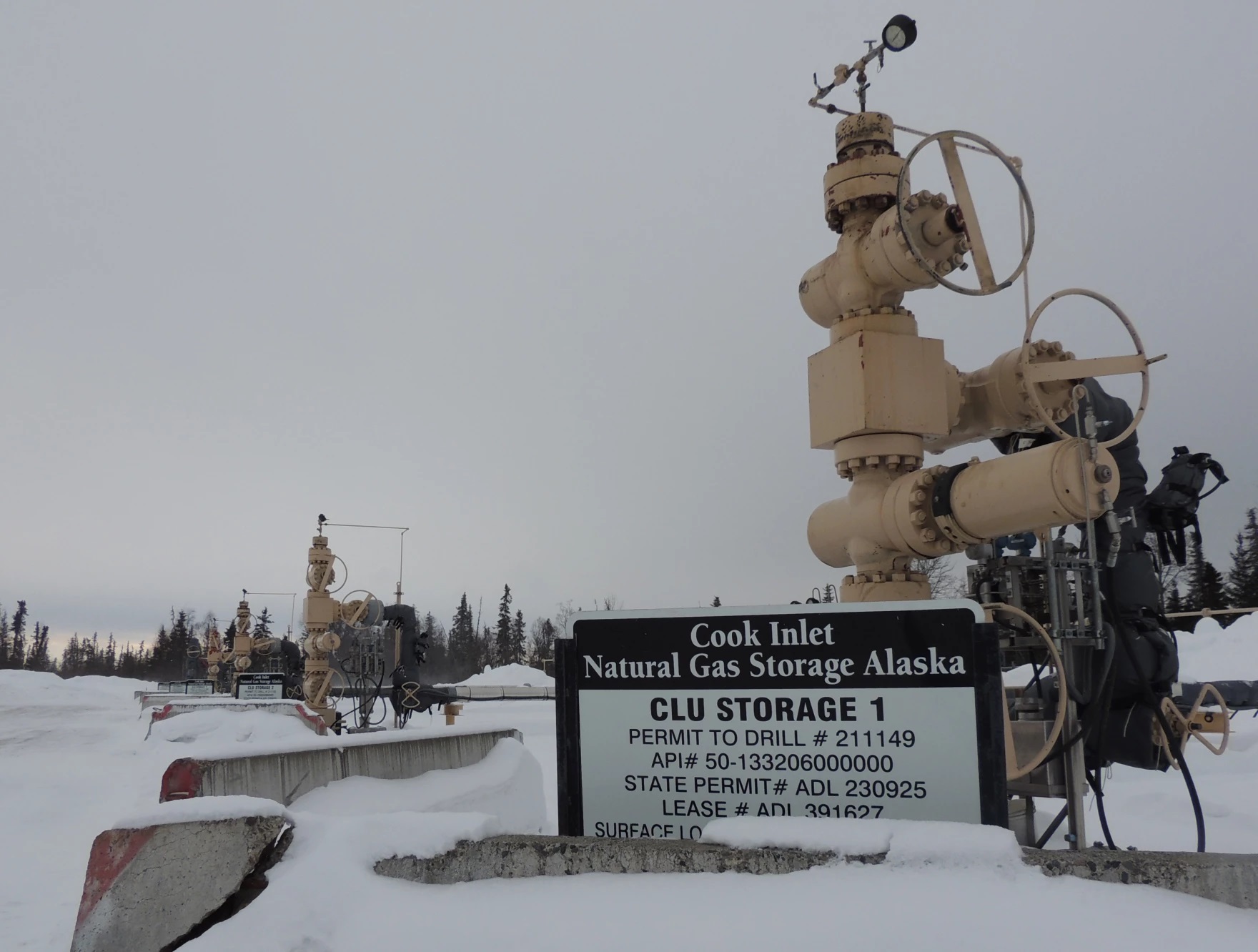
Alaskans who rely on natural gas are on the verge of a shortage, as Hilcorp, the one big producer in Cook Inlet is running out of easily accessible gas and warns it might not sign future contracts with utilities. The State of Alaska says demand for gas might outpace supply as soon as 2027.
KDLL’s Sabine Poux has been covering the looming shortages and reports that they don’t come as a surprise — and that, in fact, Alaska has seen them coming for decades.
Listen:
The following transcript has been lightly edited for clarity.
Sabine Poux: Basically, a lot of Alaskans are dependent on natural gas. Many of us use it to heat our homes and keep our lights on. And for decades, the gas we’ve used has come from Cook Inlet — where it was discovered, kind of by accident, in the late 1950s. Companies found big gas fields there, and there’s still a lot of gas there today. But what’s long been a question mark is whether companies want to actually go find and extract that gas. Digging new wells in Cook Inlet is a really costly and uncertain process. We’re talking big platforms in the middle of the ocean.
And the incentives for companies to put in all that work are somewhat low. Alaska’s utilities market is small and insulated. Basically, the producers wouldn’t make enough money to make drilling for gas worth their while. And back in 2010, a bunch of big oil and gas companies left the inlet for that reason. The situation was so dire that there were concerns about brownouts.
Michael Fanelli: Ok so it sounds like we’ve actually been here before. So what happened last time?
SP: Well, after those companies left, the Alaska Legislature passed a slew of incentives to subsidize activity in the inlet. One player in particular emerged out of that time — a Texas-based oil and gas company called Hilcorp. Their bread and butter is that they rehabilitate old oil and gas fields. So they came into Cook Inlet and basically turned the taps back on. And ever since, we’ve become really dependent on Hilcorp here on the Railbelt — that’s the area of Alaska spanning Fairbanks to the north and Homer to the south. Utilities in Anchorage and on the Kenai Peninsula, for example, get a huge amount of their energy supply from Hilcorp — more than 80%.
But Hilcorp isn’t really in the business of drilling new wells. And now that the easiest-to-access gas has run out, it seems they’ve decided it no longer makes sense for them to be the major provider on the Railbelt. Hilcorp warned last spring that it won’t guarantee future contracts with utilities — so now, they’re going to need to figure out what to do.
MF: So, what are they going to do? What are their options?
SP: Right now, utilities aren’t saying much publicly about the options they’re considering. Six utilities have been meeting since last year to mull over those possibilities, and they say they’re going to come out with a report about their options in June. What seems likely is that they’re going to have to import gas. That’s a pretty stunning prospect, when you consider how Alaska used to ship out natural gas, a lot of it, from Cook Inlet overseas to Japan. And there’s way more on the North Slope, but, of course, no gas line to get it to the Railbelt.
Renewables are also a big part of this. Utilities already get really cheap power from a hydroelectric project across Kachemak Bay from Homer, and all have talked in some way or another about adding more renewables. But it seems unlikely they’ll be able to get those numbers up really substantially before time runs out.
MF: It sounds like this all means there will be a lot of change in how Alaskans get their power and heat. What does that mean for prices?
SP: Well, what this means for Alaskans is that they’re going to see their utility bills go up. Even though natural gas on the Railbelt today is expensive when compared with prices in the Lower 48, it’s still relatively cheap for Alaska. If we start importing gas from somewhere else, that’s going to be more expensive — by some estimates, electricity rates in parts of Southcentral could go up by as much as 30%. And those costs will likely be more volatile than the costs we’re seeing now. The price of gas has remained relatively stable, again when compared with fluctuations in the world market.
There are a lot of unknowns, right now. But it seems inevitable that utilities will have to import some amount of natural gas, to fill gaps. In any case, we should get a better sense of what utilities are considering — and what those options might cost — when they come out with this report in June.
Michael Fanelli reported on economics and hosted the statewide morning news at Alaska Public Media.





